There’s a basic rule of thumb to follow when choosing paint sheens: The higher the sheen, the higher the shine — and the higher the shine, the more light will reflect on the surface. The washability of the paint will be determined more from the quality than the sheen with the new technology that is available now for paints and pigments.
Flat paint has no shine; high gloss is all shine. In between are matte, low luster, satin, eggshell, and semi-gloss, each with its own practical and decorative job to do.
Flat
A friend to walls that have something to hide flat paint soaks up, rather than reflecting light. It has the most pigment and will provide the most coverage aside from Matte, and is the easiest to apply, which translates to time and money savings. However, it’s tough to clean without taking paint off with the grime. Many uses for flat paint include ceilings and damaged walls. You will see more flat paint in apartment rentals for the cost savings and the ability to hide lines, bumps, and imperfections in the walls. We recommend flat paint only for ceilings no walls.
Matte
Very similar to flat paint, a matte finish has a very low gloss and the ability to hide most imperfections on walls. Matte finishes can give a room an elegant clean look with the advantage over flat of being washable. Many people refer to matte as a velvet finish as it can give a depth to your walls with virtually no shine. We recommend matte finish for lower traffic rooms such as a home office or master bedroom.
Low Luster
A low luster paint is a combination of a matte finish and a satin finish. If you are looking at the wall straight on it will seem to have no shine however at an angle you will be able to see a subtle shine. Low luster will have a lustrous finish with minimal light reflection but good washability and durability. It will not mask wall imperfections as well as a matte or flat finish, but it will hide most small imperfections. It is a great compromise for those wanting a matte or flat look for a high traffic area. We recommend a low luster finish for all hallways and living areas.
Satin
Has a deep luster that, despite the name, is often described as silky. It’s easy to clean, making it excellent for high-traffic areas. Its biggest flaw is it reveals all flaws, such as roller, or brush strokes, drywall patches and tape lines. Touch-ups later can be tricky for this reason, they will show. Satin finishes provide a harder finish making them ideal for high moisture areas as they will resist moisture
absorption. We recommend satin finishes for trim, bathrooms, and small kitchens.
Eggshell
Between satin and semi-gloss on the sheen (and durability) scale is eggshell, so named because it’s essentially low shine finish with high washability, like a chicken’s egg. Eggshell covers wall imperfections well and is a great finish for high traffic areas with more than average drywall imperfections. Eggshell will show more flaws the darker the color is. We only recommend eggshell for rental properties for the washability.
Semi-Gloss
Good for rooms with high moisture content, or where paint drips, and grease stains challenge walls. Also great for intricate trim work that should be showcased. Semi-gloss reflects much more light and has a distinct shine to it. It has a high washability and durability. We recommend semi-gloss for intricate high end wood trim and basements with higher moisture content.
High Gloss
High gloss paint reflects the most amount of light and has the hardest finish of all the sheens we have discussed here. Gloss does not hide any flaws in your drywall it will call attention to the smallest flaw. High gloss is more of an old school finish that is not used much in homes anymore. In order for a high gloss paint to have a smooth finish the surface must be perfection with no flaws. We do not recommend high-gloss for any home surfaces.
Tips For Choosing the Right Sheen
If your paint color is dark and rich but you don’t want a super shiny effect, step down at least one level on the sheen scale. That’s because the darker and richer the paint color is, the more colorant it has, which boosts sheen. Ditto if you’re painting a large, sun washed, or imperfect wall. The higher the sheen, the more defects will show. Adding sheen also adds to the cost, usually an extra gallon or two as you step up on the sheen scale.




